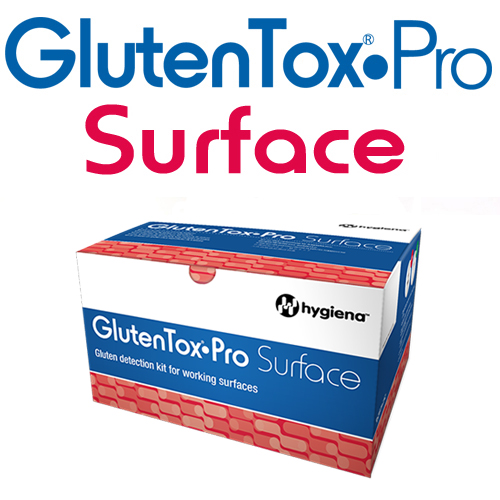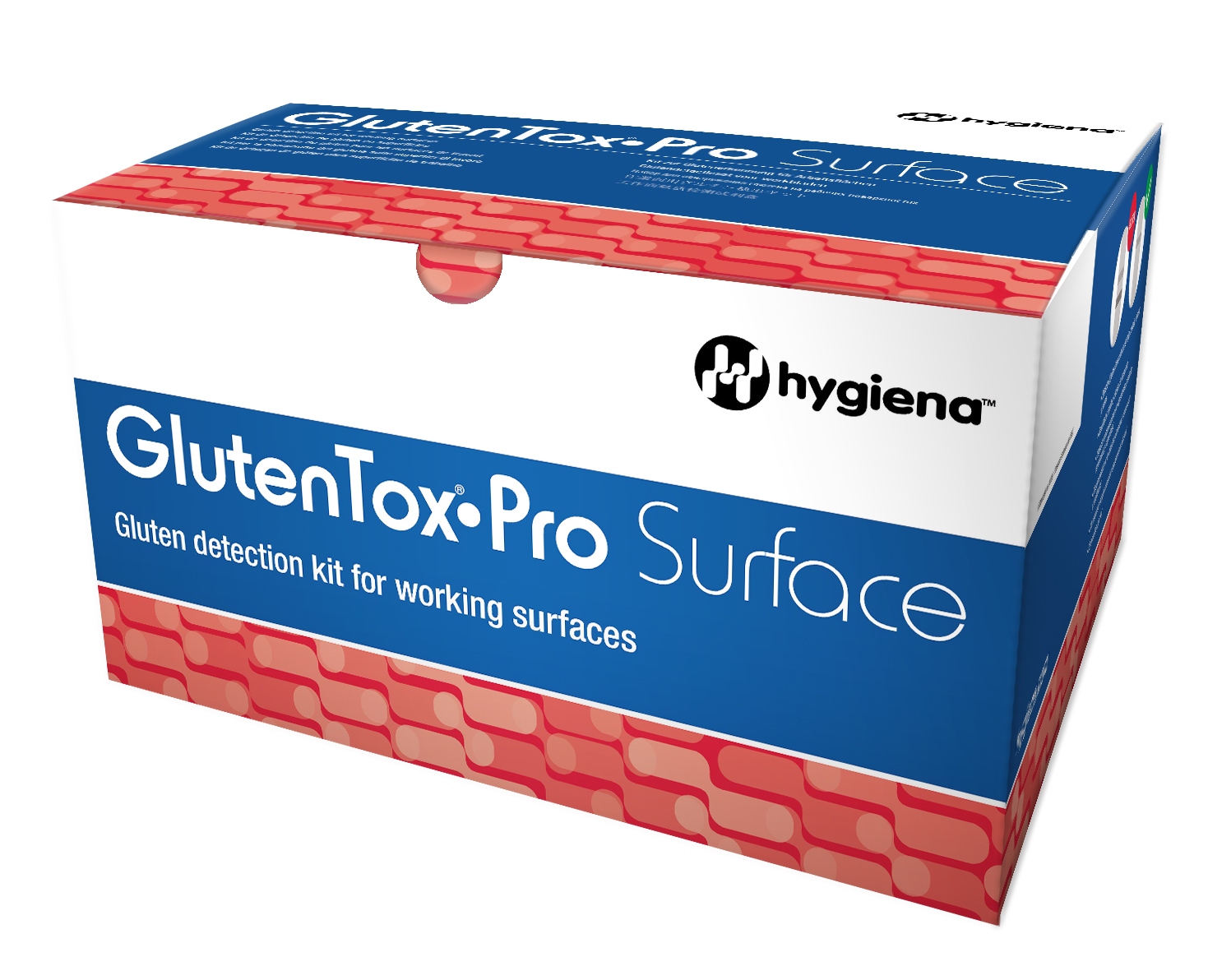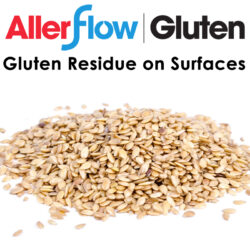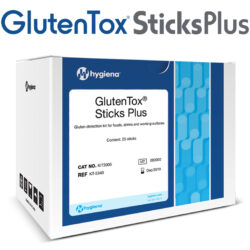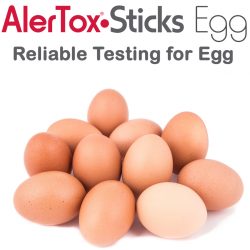- Please choose a product to add to your cart…
GlutenTox Pro Surface: test surfaces for gluten
$696.00
Description
![]()
GlutenTox Pro Surface is:
- Accurate: G12 antibody detects gluten from all toxic grains; no false positives.
- Quick response: A reliable answer in less than 11 minutes.
- Adjustable sensitivity: Threshold can be adjusted by use of additional swab.
- Easy: No special equipment needed, easy-to-read results including control line.
- Reliable: Shelf-stable
- Cost efficient: competitive pricing and volume discounts available.
Unless otherwise noted, GlutenTox Pro Surface kits ship with six month of shelf-life. GlutenTox Pro Surface is not appropriate for testing foods or beverages. For that, we recommend GlutenTox Pro.
Want more information?
Contact us for pricing and ordering information on the GlutenTox Pro line of gluten test strips.
Orders will be shipped within 2 business days of your order via UPS Ground. If expedited service is required, please contact us to confirm availability.
All sales are final. For more information, please see our Terms & Conditions.
If shipping to a Canadian address, please visit glutentox.net.
What is a lateral flow test?
Lateral Flow Devices (or LFDs) refer to a category of test designed to detect the presence or absence of a particular substance, without the need for sophisticated lab equipment. Through capillary action, the sample is brought along the length of the test and – if the substance in question is detected – will cause a visible signal to appear. The most commonly-seen type of LFD test on the market today is the over-the-counter pregnancy test.
What is the G12 antibody?
The G12 antibody was created to target the 33-mer peptide of the alpha-gliadin molecule. Studies show that this peptide is the primary cause of the auto-immune response in celiac patients. This leads to a high correlation between positive test results and samples that are toxic for people with celiac disease. If a food or beverage sample contains this toxic peptide in sufficient quantity, it will trigger a positive response from GlutenTox.
G12 is able to recognize gluten in wheat, barley, rye and certain strains of oat (for more on oat toxicity, see question below). It is also uniquely well-suited to detecting gluten in hydrolyzed, fermented, or otherwise processed foods. In addition, the G12 antibody shows no cross-reactivity with soy or any other gluten-free matrices.
Emport is pleased to share some details from Hygiena regarding the G12 antibody, specifically developed to identify the 33-mer peptide of α- gliadin. Read more in our News post on the G12 antibody.
Looking for other solutions to your testing needs? Find the kits that’s right for you.
GlutenTox Pro – easy-to-use test for ingredients, finished products, surfaces and rinsewater.
GlutenTox Sticks Plus – for challenging matrices (requires lab equipment)
What is the expiration date of the kit?
Expiration dates are clearly printed on each kit, but are generally at least six months from the ship date. You will know if you are using a test that has expired because the blue control line will not appear when you run the test.
At what temperature should I store the kit?
All kits can be stored at 35°F – 85°F. We do not suggest storing kits in the refrigerator, as excess moisture can damage the test strips.
How should I dispose of the kit after use?
All components of the kit are non-toxic and therefore fully disposable in ordinary trash. They can be recycled where appropriate according to the material.
How do I test surfaces for gluten contamination, and what do the results mean?
Surface testing results are simple and qualitative: positive indicates the presence of gluten, negative indicates the absence of gluten at a level of 10ng/cm2.
Although it’s tempting to assign a ppm value for surface testing, this is technically impossible: after all, no one is eating the counter tops! Instead, surface gluten is measured in nanograms per square centimeter. The ppm value of a food that comes into contact with the surface would vary based on variables like volume (a little ball of dough or a big one?) and texture (dough vs an already-baked cookie?)
Click here for instructions, or view the below video.
After 10 minutes, the test showed a negative result (only the blue control line appeared). But when I checked the test strip the next day, I noticed a faint pink line. What’s going on?
The test results should be read at 10 minutes (not before and not after). Any faint lines that appear after this time limit are not valid and do not indicate the presence of gluten in the sample. Conversely, positive results may fade in intensity after 10 minutes. If the test shows a pink line and a blue line at 10 minutes, it’s positive. If the test shows only a blue line at 10 minutes, it’s negative.
I’m looking for information about best practices for allergen testing in my facility.
There aren’t any easy one-size-fits-all solutions to effectively control hazard points in the manufacturing process. Minimizing hazard points and identifying best practices takes experience and expertise. Emport does have some Best Practices Guides that you might find helpful. You can download Best Practices Guides for when to test effectively and how to sample your materials.
You can also reference Emport’s article Best Practices for Gluten-Free Manufacturers, which provides a fuller explanation of some of the key concepts in creating a hazard plan.
I got a test result that surprises me. What do I do?
If your results are unexpected, please email us with more information about your test. We’ll work with you until your questions are resolved.
GlutenTox Pro Surface is not appropriate for testing foods or beverages. For that, we recommend GlutenTox Pro.
In response to many of our clients who must test difficult-to-reach nooks and crannies, we have also developed a method to test surfaces with GlutenTox using a cotton swab (not provided with the kit; use any cotton-based swab of your choosing). This method is slightly less sensitive than applying the test strip directly to the surface, and can instead detect surface gluten to a minimum level of 5ppm.
Looking for more details about our GlutenTox Pro Surface kit? Check our FAQ, or contact us with any questions.

